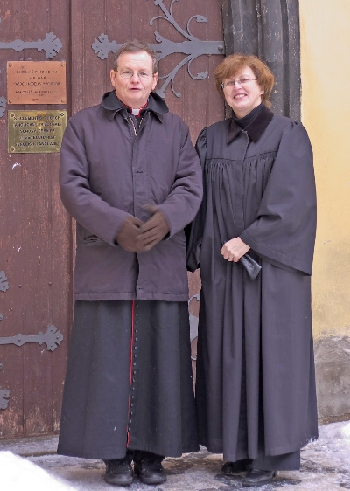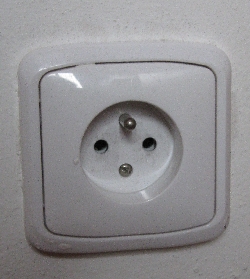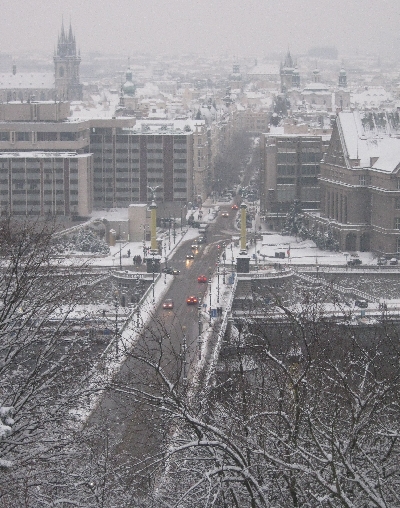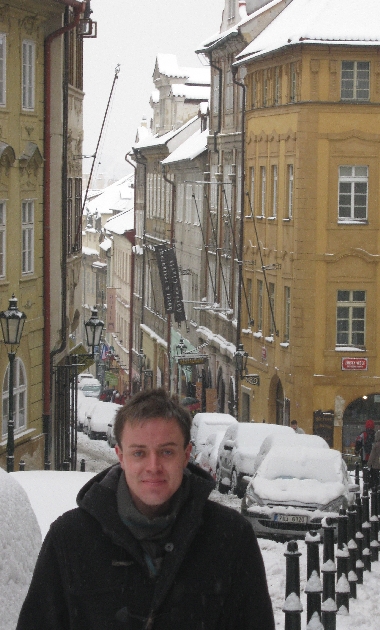
One of the things anyone taking on being an Anglican Chaplain in the Diocese in Europe is warned about, is the fact that you will be working in relative isolation. In England, most Anglican clergy meet their nearby colleagues at regular meetings of the Deanery Clergy Chapter. These meetings provide an opportunity for mutual help and support as well as being a safe environment in which to sound off about difficult parishioners! Likewise, if you want to talk an issue over with your bishop or archdeacon, they are usually no more than a one hour journey away and a meeting can be easily organised.
Here in Prague, my nearest Anglican colleagues are in Warsaw to the north, Budapest to the east and Vienna to the south-east. As I have blogged previously, I only usually see my colleagues once a year at our Eastern Archdeaconry Synod. Actually, my nearest Anglican colleague is probably the Chaplain in Leipzig, but then he is in the Archdeaconry of Germany and Northern Europe!
Another contrast with England is that my Archdeacon Patrick Curran is not only Archdeacon of the Eastern Archdeaconry, but also Chaplain of Christ Church, Vienna. In England, most Archdeacons have no other responsibilities other than being Archdeacon. Some, including my previous Archdeacon Julian Hubbard, also have a role in the Diocesan Cathedral. But as Cathedrals have numerous ordained staff, duties are rarely very onerous.
Whilst Archdeacon Patrick does have a non-stipendiary colleague, Rev’d Aileen Hackl and more recently has been joined by a part-time curate, Rev’d Jady Koch, he still has an unenviable task of heading up a large chaplaincy in Vienna as well as trying to oversee our Archdeaconry which stretches from Poland, Czech Republic and Austria in the west, all the way to Vladivostok in the east and including all the former Yugoslavia together with Greece and Turkey.
Despite the distances and the workload, Archdeacon Patrick does try to visit each of the Chaplaincies within his Archdeaconry, once every three years. Although he was in Prague on 28th October 2008 for my licensing service, he had not made a Sunday visit here since the time of my predecessor John Philpott, who retired in April 2008. Therefore, he kindly agreed to make a weekend visit this past weekend, travelling by train from Vienna on Saturday 30th January and returning by train on the afternoon of Sunday 31st January.
Patrick’s visit got off to a slightly inauspicious start. Prague has four different mainline railway stations and the through train from Vienna to Hamburg stops at two of them. Patrick got off at the first station – we were waiting to meet him at the second! But realising what he must have done when he did not appear where we were expecting him; we made the reverse journey and eventually found him.
Although Archdeacon Patrick was only with us for twenty four hours, he still managed to pack in a two hour meeting with my Church Council and a private meeting with the Churchwardens, before Sybille and I shared an evening meal with him in one of our favourite eating places, the Na staré fare Bar-Restaurant, up the hill behind where we live.

On Sunday morning, he was the guest preacher at our Sung Eucharist as we celebrated the Feast of the Presentation of Christ in the Temple or Candlemas as it is commonly known. This was followed a very enjoyable soup and sandwich shared lunch with a large number of our congregation, held in the meeting room on the third floor of Klimentská 18 which, like the Church itself, we borrow from our host congregation, the Ceskobratrské Cíckve Evangelické / the Evangelical Church of Czech Brethren. After lunch, we successfully delivered him to the correct railway station for his return four hour journey back to Vienna.
As you will see from the photo above, we were also joined for our service by the recently ordained Old Catholic priest, Petr Jan Vinš who is a fluent English-speaker. It was an extremely rare event to have three ordained clergy present for a service at St. Clements! Archdeacon Patrick also enjoyed meeting Pastor Eva Halamová who leads our host congregation. She is pictured here in her Geneva gown, alongside Patrick who put his coat over his cassock because it was so cold! The snow that you can also see in both photographs, is part of what fell on Friday 8th January and has yet to melt.


















